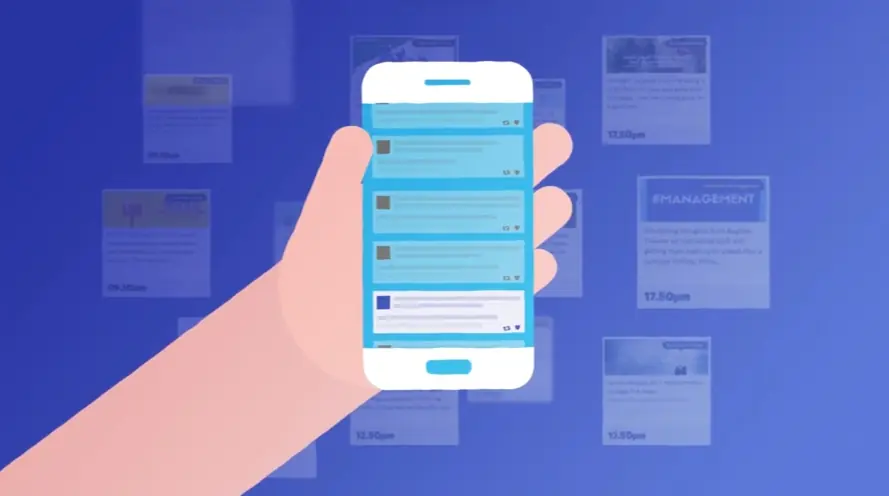In today's digital landscape, where attention spans are shrinking and competition for eyeballs is fierce, engaging video content has become a crucial tool for educating audiences. Video has the power to captivate, inform, and inspire in ways that static text simply cannot. It allows you to connect with your audience on a deeper level, fostering trust and building lasting relationships.
The need for engaging video content is undeniable. It's a powerful tool that can educate, inform, and inspire your audience. Let's dive in.
Key Takeaways
1. Avanza
Avanza is a digital transformation platform that helps companies re-engineer their processes for the digital age. The video is designed to educate viewers on the benefits of digital transformation and how Avanza can help.
Video Design - The video features a simple, minimalist style using hand-drawn illustrations and animations. The design concept is clean and modern, reflecting the efficiency and reliability of the Avanza platform. Pink and white color scheme is used throughout, emphasizing a modern and approachable feel. The animation style is simple and engaging, using transitions that are smooth and easy to follow.
Avanza wants to educate its audience about the benefits of digital transformation. The video highlights the key benefits, including paper elimination, reduced errors, and improved customer experience. This is achieved through visual representations and simple language that is easy for any audience to understand. The use of graphics and charts make the message clear and memorable, driving the key message home.
2. o9 Solutions
o9 Solutions is a company that provides solutions for supply chain optimization, demand forecasting, inventory management, and strategic planning. This video is designed to help educate demand planners on how they can use the o9 platform to gain insight from machine learning, enrich forecasts, improve accuracy and reduce the time spent in the forecasting consensus process.
Video Design - The video design is minimal and uses a black background with white text and graphics. The video relies on the power of simplicity to help the viewer focus on the key takeaways. This is achieved by showing animated graphics, simple Venn Diagrams, and text on a black background. This style of video design is clear, direct, and efficient. It highlights important concepts and helps viewers quickly grasp the information.
The video helps to educate the audience by showcasing how o9 Solutions can help demand planners achieve better results. The video's clean, minimalist aesthetic provides a clean, easy to understand experience. The video uses animated graphics to explain complex concepts in a simple and engaging manner. This approach helps to keep the audience's attention and reinforces the key points being made. The video successfully emphasizes the value that o9 Solutions offers to demand planners. This video helps to educate the audience by showcasing how o9 Solutions can help demand planners achieve better results.
3. Wrike
Wrike is a company that helps increase business efficiency through resource allocation and planning. The video is designed to showcase the problem of inefficient resource management and present Wrike's solution.
Video Design - The video utilizes a simple design style with a focus on graphics and text. The graphics are clean, modern and easy to understand. A combination of animations and illustrations is used to highlight the workflow and visualize the problem of inefficient resource allocation. The use of colorful gradients and a playful font create a light and inviting tone.
Wrike has successfully achieved the goal of educating potential buyers by showcasing the problems associated with inefficient resource management and presenting Wrike as the solution. The video focuses on the negative consequences of not managing resources properly, such as staff burnout, low team morale, increased operating expenses, and business inefficiency. The graphic representation of the problem is effective, clear and easy to understand, making it engaging and impactful for the target audience. The video concludes by highlighting Wrike's solution, effectively prompting viewers to explore Wrike as a potential solution to their resource management challenges.
4. Axway
Axway Amplify is a platform that helps businesses manage the complexity of APIs. The video is designed to introduce the platform and its benefits.
Video Design - The video uses simple graphics and animations to illustrate the challenges of managing APIs. The visuals are clean and modern with a white background and minimal use of color.
The design style is minimalist and focused on data visualization. It uses a progress bar to represent the increasing complexity of APIs, with icons to represent various aspects of API management, such as security and governance.
The video is straightforward and concise. It focuses on the challenges faced by businesses in managing APIs, such as security, governance and visibility. The video explains how Axway Amplify solves these challenges by providing a platform that enables businesses to effectively manage APIs across teams, the hybrid cloud, and third-party ecosystems. This video effectively educates its target audience by providing a clear understanding of the platform and its benefits.
5. GE Lighting
GE Lighting is a company that makes smart home solutions, such as smart switches, bulbs, and plugs. This video is designed to demonstrate how these products can be used to create the perfect bedroom environment.
Video Design - The video uses a clean and modern animation style with bold colors and simple line art. This is in keeping with the GE Lighting brand, which is known for its high-quality and stylish products. The video focuses on the key features of the smart home devices, such as the ability to control lights, temperature, and aroma from a mobile app.
GE Lighting has successfully educated customers on the benefits of their smart home products. The video uses clear visuals and simple language to explain how these products can improve the comfort of the bedroom. This helps educate customers about the product and encourages them to consider using GE Lighting's smart home solutions.
6. Arctic Wolf
Arctic Wolf helps companies protect their data and systems in the cloud. The video is designed to promote their Cloud Detection and Response solution and showcase the benefits of their Concierge Security team.
Video Design - The video uses a visually appealing and modern design style. Animated icons and graphics illustrate various cloud security threats, such as phishing emails, ransomware attacks, and suspicious resource usage. The color palette is dominated by blue and orange, symbolizing trust and danger. This creates a sense of urgency, emphasizing the importance of proactive cloud security.
Arctic Wolf has successfully achieved the goal of educating online visitors. The use of clear, concise language, engaging visuals, and the focus on specific cloud security threats help viewers understand the value of their solution and how it can benefit their business. By focusing on the threats and showcasing their Concierge Security team, the video effectively communicates their value proposition and educates viewers about the importance of proactive cloud security.
7. ENGIE
ENGIE is a company that focuses on blue carbon projects to help protect the environment.
The video is designed to educate potential buyers about this blue carbon project, the benefits it brings, and how it can help achieve its goals.
Video Design - The video uses a clean and simple design style with bold graphics and a clear color scheme. The use of animated graphics allows ENGIE to showcase their project in a way that is both engaging and easy to understand. The video employs animation, drone technology, and real-time data to visualize the project's progress and its impact on the environment.
ENGIE wants to educate potential buyers about their blue carbon project, which is a new way to reduce carbon emissions by rehabilitating mangrove habitats. The video uses clear graphics and animation to illustrate how the project works and the benefits it offers for both the environment and the community. The video effectively highlights the use of technology, including drones and real-time data collection, to enhance the project's efficiency and effectiveness. This approach allows the viewers to understand the project's intricacies and its role in combating climate change. This strategy helps ENGIE reach their target audience and educate them on their commitment to sustainability.
8. Valvoline
Valvoline is a company that produces motor oil. This video is designed to explain the importance of using high-quality motor oil for everyday driving.
Video Design - The video utilizes a clean, minimal aesthetic with simple graphics and animations. The use of white and blue color schemes creates a sense of professionalism and trust. The use of a car with a Valvoline license plate helps to create a direct connection to the brand.
Valvoline successfully educates potential clients by presenting the issue of severe driving conditions that are not always related to intense speed. They showcase how these everyday driving experiences can cause damage to engine parts that most people don't think about. The video uses visuals and animations to highlight the complex, delicate machinery within an engine that requires the right type of motor oil to protect it. The focus on everyday driving scenarios, instead of just focusing on high-speed racing, makes the information more relatable and useful for a wider audience.
9. Deep Vision
Deep Vision's video is designed to introduce their Defect Visual Inspection solution, which leverages AI for visual anomaly detection. It highlights the three formats in which the solution is available, Starter Kit, System on Module, and Software library.
Video Design - The video has a minimalist design, with clean lines and bright colors. White icons on a green background make the video more engaging, while the simple animated icons illustrate the key features of the product. The use of animation provides a visually appealing way to present the information, and the bold font style makes the text easy to read.
Deep Vision successfully educates potential app users about the advantages of their AI solution. The video highlights the product's key features, how the solution works, and how easy it is to use. The use of simple animations and clear language allows them to convey the information in a concise and engaging manner, encouraging viewers to learn more about this new solution.
10. Iron Mountain
Iron Mountain is a Data Center provider that provides efficient and sustainable solutions for its clients. The video is designed to educate viewers about the importance of sustainability and the role data centers play in addressing climate change.
Video Design - The video uses a clean, minimalist design aesthetic. It utilizes a combination of isometric graphics and text to explain the complex subject matter in a simple and engaging way. The isometric style, combined with bright, vibrant colors, creates a sense of visual depth and draws the viewer's eye toward the key points of the video.
Iron Mountain has successfully achieved its goal of educating viewers on the critical role of data centers in sustainability and how they are working to lessen their impact on the environment. The video, using a minimalist yet visually appealing design style, conveys its message in a simple and engaging manner, helping Iron Mountain educate prospects on their service and position them as a leader in the field of sustainable data centers.
Educational Video Definition
Educational Video Definition
An educational video goes beyond simply presenting information; it's designed to actively engage viewers and facilitate learning. These videos aim to teach, inform, or explain a specific topic or concept, catering to diverse learning styles and promoting knowledge retention.
Educational videos come in various formats, each suited to different subjects. Documentary-style videos can explore complex historical events, while animation brings abstract concepts to life. Lecture capture allows students to revisit classroom teachings, and interactive videos encourage active participation. Ultimately, educational videos empower viewers to acquire new knowledge and skills in an engaging and effective manner.
Educational Video Types
Educational Video Types
Educational videos encompass a wide range of formats, each tailored to specific learning objectives.
Explaining Concepts: Explainer videos simplify complex ideas, while animated videos visualize abstract concepts and infographics present data in a digestible format.
Demonstrating Skills: Tutorials provide step-by-step instructions, product demos showcase functionality, and training videos guide users through software or systems.
Sharing Stories: Case studies illustrate real-world applications, customer testimonials build trust, and behind-the-scenes videos offer insights into processes or organizations.
Engaging Audiences: Webinars deliver in-depth presentations, Q&A videos address common queries, and interviews provide expert perspectives. Live streams offer real-time interaction, and short-form videos cater to quick consumption.
Video Education Effectiveness
Video Education Effectiveness
Video's effectiveness in education stems from its ability to engage viewers on multiple levels. Its visual appeal captures attention, while storytelling techniques make information memorable and relatable.
Research shows that video improves learning by up to 400% compared to text alone. This is because video caters to different learning styles. Visual learners benefit from seeing concepts illustrated, auditory learners absorb information through narration, and kinesthetic learners engage with interactive elements.
By stimulating multiple senses and fostering active participation, video enhances comprehension, retention, and overall learning outcomes.
Educate Audience with Video
Educate Audience with Video
Video can be a powerful tool for educating your target audience about your offerings, tailored to your specific product or service.
For B2B: Explainer videos can showcase your software's features and benefits, while case studies demonstrate its impact on other businesses. Webinars can delve into industry-specific challenges and solutions.
For B2C: Product demos can highlight the ease of use of a new gadget, while lifestyle videos can showcase how your clothing brand fits into everyday life. Customer testimonials can build trust and social proof.
For SaaS Products: Tutorials can guide users through onboarding, while feature highlight videos can showcase new updates.
For Physical Goods: Unboxing videos can create excitement, while "how-to" videos can demonstrate product assembly or usage.
Successful Educational Video
Successful Educational Video
A successful educational video hinges on several key elements:
Clarity: A concise message ensures viewers grasp the core takeaway. Achieve this by focusing on a single learning objective and using clear, jargon-free language.
Engagement: Storytelling techniques, such as relatable characters or a compelling narrative arc, captivate viewers and make information stick.
Quality: High-quality visuals and audio enhance professionalism and credibility. Invest in good equipment and ensure proper lighting and sound recording.
Call to Action: Guide viewers towards the next step, whether it's visiting your website, downloading a resource, or subscribing to your channel.
Relevance: Tailor content to your target audience's needs and interests. Research their pain points and provide solutions through your video.
Engaging Educational Videos
Engaging Educational Videos
Maintaining viewer engagement is crucial for effective educational videos.
Visuals: Break up text with images, animations, or screen recordings. For example, when explaining a scientific concept, use visuals to illustrate the process.
Storytelling: Weave a narrative around your topic. Instead of simply listing facts about historical figures, tell their stories with engaging visuals and anecdotes.
Conciseness: Respect viewers' time by keeping videos focused and to the point. Aim for shorter videos, or break longer content into digestible segments.
Humor: Injecting humor, where appropriate, can make learning more enjoyable. A well-placed joke or lighthearted animation can break the monotony.
Interaction: Pose questions throughout the video to encourage active thinking. For example, in a tutorial, ask viewers to predict the next step before demonstrating it.
Variety: Experiment with different formats to cater to diverse learning styles. Combine explainer videos with tutorials, case studies, and interviews.
High-Quality Educational Videos
High-Quality Educational Videos
Creating high-quality educational videos involves careful planning and execution across different stages:
Pre-Production: Define your target audience, learning objectives, and key message. Choose the appropriate video format and write a compelling script.
Production: Invest in good equipment (camera, microphone, lighting) and ensure a professional setting. Use visuals effectively and pay attention to audio quality.
Post-Production: Edit your video carefully to maintain a good pace and flow. Add music, graphics, and captions to enhance engagement and accessibility.
Optimization: Use relevant keywords in your video title, description, and tags to improve searchability.
Promotion: Share your video on social media, your website, and relevant online communities. Engage with viewers in the comments section.
Measure Video Success
Measure Video Success
Measuring the success of your educational videos requires tracking key metrics:
Views: Indicate reach and brand awareness. Higher views suggest broader exposure.
Engagement: Likes, comments, and shares reflect audience interest and interaction. High engagement signals valuable content.
Watch Time: Measures how long viewers stay engaged. Longer watch times indicate compelling content and effective pacing.
Click-Through Rate (CTR): Tracks how many viewers click on your call to action. High CTR suggests a strong call to action and relevant content.
Conversion Rate: Measures how many viewers take a desired action (e.g., sign up, purchase). High conversion rates demonstrate video's effectiveness in driving desired outcomes.
Avoid Video Mistakes
Avoid Video Mistakes
Avoid these common pitfalls when creating educational videos:
Lack of Planning: Failing to plan your video's message, target audience, and format can lead to a disorganized and ineffective final product. Solution: Create a detailed outline and script before filming.
Poor Equipment: Low-quality audio or visuals can detract from your message and damage credibility. Solution: Invest in decent equipment or hire a professional videographer.
Boring Script: A dry, monotone script will lose viewers' interest. Solution: Incorporate storytelling, humor, and visuals to make your content engaging.
Neglecting Editing: Poor editing can result in a confusing and disjointed video. Solution: Take the time to edit your video for clarity, pacing, and visual appeal.
Ignoring Promotion: Even the best video won't be effective if no one sees it. Solution: Promote your video on social media, your website, and other relevant platforms.
Video for B2B Marketing
Video for B2B Marketing
Video can be a powerful asset in your B2B marketing strategy:
Explainer Videos: Clearly communicate your complex product or service to potential clients. For example, a software company can create a video demonstrating its key features and benefits.
Case Studies: Showcase how your solution has helped other businesses achieve success. A marketing agency could create a video featuring a client who saw significant growth after implementing their services.
Webinars: Host in-depth presentations on industry trends and insights. A cybersecurity firm could host a webinar on the latest threats and best practices for data protection.
Thought Leadership Videos: Establish your company as an industry expert by sharing valuable insights and perspectives. A consulting firm could create videos discussing emerging market trends and offering strategic advice.
Customer Testimonials: Build trust and credibility by featuring satisfied clients sharing their positive experiences. A logistics company could showcase testimonials from clients who have benefited from their efficient delivery services.
Video for Sales & Conversions
Video for Sales & Conversions
Video can be strategically used throughout the sales funnel to drive conversions:
Awareness: Product demos can showcase the key features and benefits of your offering, capturing the attention of potential customers.
Consideration: Explainer videos can address common questions and concerns, helping prospects understand the value proposition.
Decision: Customer testimonial videos can build trust and social proof, encouraging prospects to make a purchase.
Action: Sales pitch videos can deliver a compelling call to action, prompting viewers to request a demo, sign up for a trial, or make a purchase.
Retargeting: Use video ads to re-engage website visitors who have shown interest in your product or service but haven't converted.
Video for Customer Support
Video for Customer Support
Video can enhance your customer support efforts and improve customer satisfaction:
FAQ Videos: Address frequently asked questions in a visually engaging format. A software company can create videos demonstrating how to troubleshoot common technical issues.
Tutorial Videos: Guide customers through specific features or functionalities of your product or service. An e-commerce platform can create videos showing customers how to navigate the website and make purchases.
Live Q&A Sessions: Host live video sessions where customers can ask questions and receive real-time answers from your support team. A financial institution could host live Q&A sessions to address customer queries about their accounts or services.
Personalized Support Videos: Create customized videos to address specific customer issues or provide tailored guidance. A tech support team can create personalized videos walking customers through troubleshooting steps for their specific problem.
Successful Video Campaigns
Successful Video Campaigns
Several educational video campaigns have achieved remarkable success:
Khan Academy: Offers a vast library of free educational videos covering various subjects. Its success stems from its accessibility, comprehensive content, and user-friendly platform.
TED Talks: Features short, impactful talks on diverse topics. Its success lies in its ability to showcase inspiring speakers and share thought-provoking ideas in a concise and engaging format.
Crash Course: Provides fast-paced, informative videos on various subjects. Its success is attributed to its engaging style, humor, and use of visuals to simplify complex concepts.
The School of Life: Explores philosophical and psychological concepts in an accessible manner. Its success comes from its ability to address universal human experiences and offer insightful perspectives on personal development.
Video Content Strategy
Video Content Strategy
Aligning your video content strategy with your marketing goals ensures that your videos contribute to your overall business objectives:
Define Target Audience: Understand your ideal viewer's demographics, interests, and needs. This will inform your content choices and distribution strategy.
Identify Marketing Goals: Determine what you want to achieve with your videos (e.g., brand awareness, lead generation, sales). This will guide your content creation and measurement metrics.
Choose Video Formats: Select formats that best suit your target audience and marketing goals. Explainer videos are great for introducing products, while testimonials build trust.
Content Calendar: Plan your video content in advance to ensure consistency and relevance. Align your video topics with seasonal trends, industry events, or product launches.
Track Results: Monitor key metrics (views, engagement, conversions) to assess the effectiveness of your videos and make data-driven adjustments.
Expand Audience with Video
Expand Audience with Video
Video can be a powerful tool for expanding your reach and connecting with a larger audience:
Social Media: Share your videos on platforms like Facebook, Instagram, Twitter, and LinkedIn, tailoring your content to each platform's audience.
Website Integration: Embed videos on your website's homepage, product pages, or blog posts to engage visitors and enhance their experience.
Cross-Promotion: Promote your videos on other relevant websites, blogs, and forums within your industry or niche.
Paid Advertising: Utilize platforms like YouTube Ads and social media ads to target specific demographics and interests, expanding your reach beyond your existing followers.
Influencer Marketing: Collaborate with influencers in your industry to promote your videos to their engaged audience.
Build Brand with Video
Build Brand with Video
Video can be instrumental in building a strong brand presence and establishing credibility:
Brand Videos: Showcase your company's values, mission, and culture. A behind-the-scenes video can humanize your brand and build trust.
Thought Leadership Videos: Share insights and expertise on industry trends, positioning your company as a thought leader.
Customer Testimonials: Feature satisfied customers sharing their positive experiences, building social proof and credibility.
Event Participation: Record presentations or interviews at industry events and share them online to reach a wider audience.
Partnerships: Collaborate with other reputable brands or organizations to create co-branded videos, expanding your reach and enhancing credibility.
Generate Leads with Video
Generate Leads with Video
Video can be effectively integrated into your lead generation and nurturing strategies:
Lead Generation Videos: Offer valuable content (e.g., webinars, ebooks, free trials) in exchange for contact information. A software company can offer a free trial in exchange for viewers' email addresses.
Nurture Videos: Provide prospects with relevant information and resources to guide them through the buyer's journey. A marketing agency can create a series of videos educating prospects on different marketing strategies.
Retargeting: Use video ads to re-engage website visitors who have shown interest in your product or service but haven't converted.
Email Marketing: Include videos in your email campaigns to increase engagement and click-through rates. A real estate agent can send video tours of properties to potential buyers.
Engaging Customer Experience
Engaging Customer Experience
Video offers a dynamic way to elevate customer experience beyond static text and images.
Personalized Support: Imagine sending a customer struggling with your software a short, personalized video demonstrating the solution, recorded using screen capture software. This targeted approach fosters a feeling of individual attention and care.
Interactive Elements: Incorporate interactive elements like quizzes or polls within your videos to actively involve viewers. Branching narratives, where viewers choose their own path through the video, can create a truly personalized and memorable experience.
Live Q&A Sessions: Host live Q&A sessions with your company experts. This provides a platform for real-time interaction, addressing customer questions and building trust through transparency.
Feedback Collection: Use video surveys to gather customer feedback in a more engaging way than traditional text-based forms. Encourage customers to share their thoughts and experiences through short video responses.
Improve Customer Loyalty
Improve Customer Loyalty
Video can be a powerful tool for fostering deeper connections with your customers, leading to increased loyalty and retention.
Customer Success Stories: Showcase the positive experiences of your customers through compelling video testimonials. These stories build trust and demonstrate the value your product or service brings to others.
Educational Content: Create video tutorials and guides that empower your customers to get the most out of your product or service. This demonstrates your commitment to their success and builds a sense of ongoing value.
Building Community: Use video to create a sense of belonging among your customers. Host webinars or live events that bring customers together to learn and interact. Share behind-the-scenes glimpses of your company culture to humanize your brand.
Appreciation and Recognition: Show your customers you value their business with personalized thank you videos or exclusive video content for loyal customers. This fosters a sense of appreciation and strengthens the customer relationship.
Drive Revenue with Video
Drive Revenue with Video
Video can be strategically integrated into your sales funnel to boost revenue and maximize your return on investment.
Awareness Stage: Use explainer videos to introduce your brand and highlight the problem your product or service solves. capture attention and generate interest with engaging visuals and storytelling.
Consideration Stage: Showcase the features and benefits of your product through compelling product demos. Use video to address common customer questions and concerns, building confidence in your offering.
Decision Stage: Leverage the power of social proof with customer testimonial videos. Showcasing positive experiences from existing customers can be a powerful motivator for potential buyers.
Action Stage: Create videos with strong calls to action, encouraging viewers to make a purchase, sign up for a free trial, or request a demo. Use limited-time offers and promotions to create a sense of urgency.
Industry Trends with Video
Industry Trends with Video
Video provides a dynamic platform for sharing your expertise and establishing your brand as a thought leader in your industry.
Thought Leadership Videos: Create insightful videos that discuss current industry trends, challenges, and opportunities. Share your unique perspectives and insights to position your company as a knowledgeable resource.
Webinar Series: Host webinars featuring industry experts and thought leaders. These interactive sessions provide valuable information and allow for audience participation through Q&A segments.
Animated Explainer Videos: Use animation to simplify complex industry concepts and make them more accessible to a wider audience. Visual learners will appreciate the engaging and informative format.
Data Visualization Videos: Transform data and statistics into compelling visuals through animated charts and graphs. This format can make industry trends and insights more engaging and easier to understand.
Customer Success Stories
Customer Success Stories
Authentic customer stories are powerful tools for building trust and credibility. Video brings these stories to life in a way that text simply cannot.
On-Site Interviews: Visit your satisfied customers and film interviews about their experiences with your product or service. Capture their genuine enthusiasm and the positive impact your offering has had on their business.
User-Generated Content: Encourage your customers to create their own videos sharing their success stories. This authentic and relatable content can be incredibly persuasive for potential buyers.
Behind-the-Scenes Glimpses: Offer a peek behind the curtain and show how your product or service helps customers achieve their goals. Film customers using your product in their everyday environment to demonstrate its real-world value.
Highlighting Key Metrics: Incorporate data and metrics into your customer success stories to quantify the positive impact of your product or service. Show how your offering has helped customers increase efficiency, reduce costs, or achieve other measurable results.
Build Community with Video
Build Community with Video
Video can be a powerful catalyst for fostering a sense of community and building stronger relationships with your audience.
Live Q&A Sessions: Host regular live Q&A sessions with your team or industry experts. This provides a platform for real-time interaction, answering audience questions, and fostering a sense of connection.
Behind-the-Scenes Content: Give your audience a glimpse into your company culture and the people behind your brand. Share behind-the-scenes videos of your team at work, company events, or product development processes.
User-Generated Content Contests: Encourage your audience to create and share videos related to your brand or industry. Host contests and offer prizes to incentivize participation and build excitement within your community.
Interactive Video Series: Create a video series that encourages audience participation and discussion. Ask questions, solicit feedback, and create opportunities for viewers to connect with each other and share their experiences.
Valuable Resources with Video
Valuable Resources with Video
Video offers a dynamic and engaging way to deliver valuable information and resources that empower your audience.
Explainer Videos: Simplify complex topics or processes with concise and visually appealing explainer videos. Use animation, graphics, and clear narration to make information easily digestible.
How-To Tutorials: Create step-by-step video tutorials that guide viewers through specific tasks or processes related to your product or service. This empowers customers to use your offering effectively and independently.
FAQ Videos: Address common customer questions and concerns through dedicated FAQ videos. This saves time for your support team and provides readily accessible information for your audience.
Expert Interviews: Share insights and expertise from industry leaders through video interviews. This provides valuable perspectives and establishes your brand as a trusted source of information.
Emotional Storytelling with Video
Emotional Storytelling with Video
Video is a powerful storytelling medium, allowing you to connect with your audience on a deeper emotional level.
Know Your Audience: Understand your target audience's values, aspirations, and challenges. Tailor your story to resonate with their specific needs and interests.
Craft a Clear Message: Define the core message you want to convey through your story. What emotions do you want to evoke? What action do you want your audience to take?
Visual Storytelling: Use compelling visuals, imagery, and cinematography to bring your story to life. Show, don't just tell.
Music and Sound: Use music and sound effects to enhance the emotional impact of your story. Choose music that complements the mood and tone of your video.
Call to Action: End your video with a clear call to action, encouraging viewers to take the next step, whether it's visiting your website, making a purchase, or sharing your video.
Example: Dove's "Real Beauty Sketches" campaign used video to tell a powerful story about self-perception and beauty standards, evoking strong emotions and generating significant brand awareness.
Urgency with Video
Urgency with Video
Video can be a powerful tool for driving immediate action from your audience by creating a sense of urgency and scarcity.
Strong Call to Action: Clearly state what you want viewers to do and make it easy for them to take action. Include prominent call-to-action buttons or links within your video.
Highlight Benefits: Emphasize the benefits of taking action now. What will viewers gain by acting quickly? What will they miss out on if they delay?
Limited-Time Offers: Create a sense of scarcity by promoting limited-time offers, discounts, or bonuses. This encourages viewers to act quickly before the opportunity expires.
Countdown Timers: Visually display a countdown timer within your video to emphasize the limited-time nature of your offer. This creates a sense of urgency and encourages immediate action.
Example: Many e-commerce brands use video ads featuring flash sales and countdown timers to drive immediate purchases.
Personalized Video Content
Personalized Video Content
Video analytics can provide valuable insights into viewer behavior, allowing you to segment your audience and deliver more personalized content.
Data-Driven Segmentation: Use video analytics like watch time, engagement, and demographics to identify different audience segments based on their interests and preferences.
Tailored Video Content: Create different video variations tailored to the specific needs and interests of each segment. This ensures that your message resonates with each viewer on a personal level.
Retargeting Campaigns: Use video retargeting to reach viewers who have previously interacted with your videos or website. Show them relevant content based on their past behavior to increase engagement and conversions.
Personalized Email Marketing: Incorporate video into your email marketing campaigns to deliver personalized messages and recommendations based on viewer preferences and past interactions.
Example: A software company might create separate video tutorials for beginners and advanced users based on their engagement with previous tutorial videos.
Analyze Video Engagement
Analyze Video Engagement
Video analytics provide a wealth of data that can help you understand how your audience is interacting with your content and optimize your video strategy.
Key Metrics: Track metrics like views, watch time, engagement (likes, comments, shares), click-through rates, and conversions to gain insights into viewer behavior.
Analyzing Watch Time: Pay close attention to audience retention rates. Identify drop-off points in your videos to understand where viewers are losing interest and optimize your content accordingly.
Engagement Insights: Analyze comments and social media shares to understand what resonates with your audience and what topics they are most interested in.
A/B Testing: Use A/B testing to compare different versions of your videos and identify which elements drive the most engagement and conversions.
Example: By analyzing watch time data, a marketer might discover that viewers are dropping off during a lengthy product demo, prompting them to create shorter, more focused product videos.
Optimize Video Content
Optimize Video Content
Optimizing your video content for search and social media is crucial for increasing visibility and reach.
Keyword Research: Identify relevant keywords related to your video topic and incorporate them into your video title, description, and tags.
Compelling Thumbnails: Create visually appealing thumbnails that accurately represent your video content and entice viewers to click.
Social Media Sharing: Promote your videos on social media platforms using relevant hashtags and engaging captions. Encourage sharing and interaction.
Website Embedding: Embed your videos on your website and blog posts to increase engagement and improve SEO.
Example: A fitness brand might optimize their workout videos by using keywords like "home workout," "beginner fitness," and "weight loss" in their video titles and descriptions.
Integrated Video Marketing
Integrated Video Marketing
Video can be a powerful unifying element in your marketing campaigns, creating a consistent brand experience across multiple channels.
Cross-Channel Consistency: Use video consistently across your website, social media platforms, email marketing, and paid advertising campaigns.
Unified Brand Message: Ensure that your video content aligns with your overall brand message and visual identity. Use consistent branding elements like logos, colors, and fonts.
Repurposing Content: Repurpose your video content into shorter clips, GIFs, and images for use on social media and other channels.
Tracking and Analysis: Track the performance of your video content across all channels to understand what's working and optimize your campaigns accordingly.
Example: A travel company might use a visually stunning video showcasing a destination across their website, social media ads, and email newsletters, creating a cohesive and impactful campaign.
Micro-Interactions with Video
Micro-Interactions with Video
Micro-interactions are small, subtle design elements that can significantly enhance the viewer experience in your videos.
Interactive Elements: Incorporate interactive elements like clickable buttons, hotspots, polls, and quizzes to encourage active participation.
Animation and Motion Graphics: Use subtle animations and motion graphics to draw attention to key information, highlight calls to action, and add visual interest.
Sound Effects: Use sound effects strategically to provide feedback to user interactions, emphasize key moments, and create a more immersive experience.
Example: A product demo video might use animated arrows and highlights to draw attention to specific features, accompanied by subtle sound effects to acknowledge user interactions.
Customer Journey with Video
Customer Journey with Video
Video can be strategically used at each stage of the customer journey to educate, engage, and ultimately convert prospects into customers.
Awareness Stage: Create videos that introduce your brand and highlight the problem your product or service solves. Use storytelling and emotional appeals to capture attention.
Consideration Stage: Provide in-depth product demos and explainer videos that showcase the features and benefits of your offering. Address common customer questions and concerns.
Decision Stage: Share customer testimonial videos and case studies that demonstrate the positive impact of your product or service. Build trust and credibility through social proof.
Action Stage: Create videos with strong calls to action, encouraging viewers to make a purchase, request a demo, or sign up for a free trial.
Example: A SaaS company might use a series of videos starting with an explainer video about the challenges of project management, followed by a product demo showcasing their software solution, and concluding with customer testimonials highlighting the benefits of using their platform.
Optimize Video Content Impact
Optimize Video Content Impact
A/B testing allows you to experiment with different creative elements in your videos and identify what resonates best with your audience.
Testing Variables: Test different video titles, descriptions, thumbnails, calls to action, video lengths, and even different video styles or formats.
Measuring Results: Track key metrics like click-through rates, watch time, engagement, and conversions to determine which version of your video performs better.
Iterative Optimization: Use the insights from your A/B tests to continuously refine your video content and optimize it for maximum impact.
Example: A marketer might test two different video thumbnails for the same video, one featuring a person smiling and the other featuring a product shot. By analyzing click-through rates, they can determine which thumbnail is more effective at attracting viewers.
Video Content Marketing Strategy
Video Content Marketing Strategy
Video can be a cornerstone of your content marketing strategy, attracting, engaging, and converting your target audience.
Content Calendar: Develop a content calendar that outlines your video topics, formats, and publishing schedule. Ensure consistency and relevance to your audience's interests.
Target Audience Focus: Create videos that address the specific needs, pain points, and interests of your target audience. Tailor your content to resonate with their specific demographics and psychographics.
Diverse Video Formats: Experiment with different video formats like explainer videos, tutorials, interviews, behind-the-scenes content, and live streams to keep your content fresh and engaging.
Performance Tracking: Monitor the performance of your video content using analytics to understand what's working and optimize your strategy accordingly.
Example: A food blog might create a content calendar featuring a mix of recipe videos, cooking technique tutorials, restaurant reviews, and behind-the-scenes glimpses into their kitchen.










